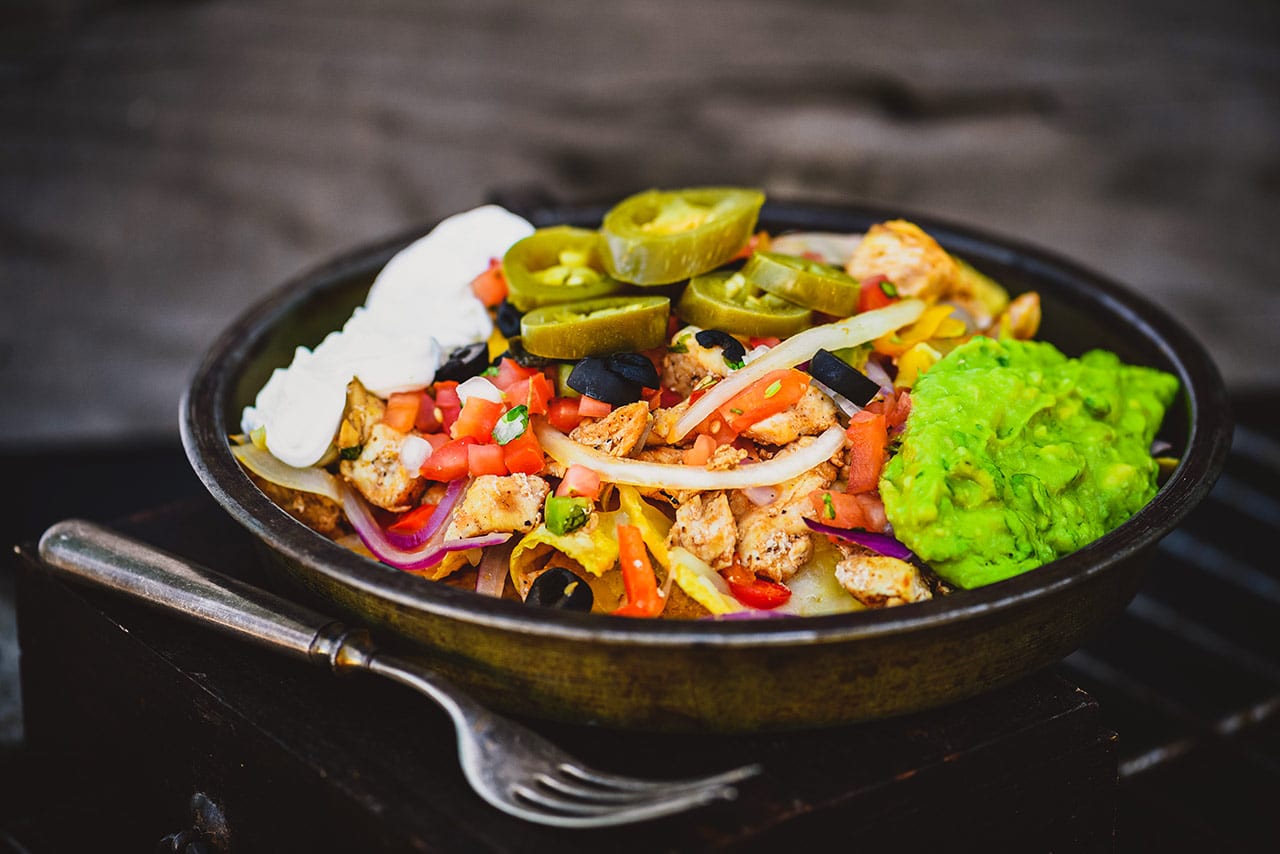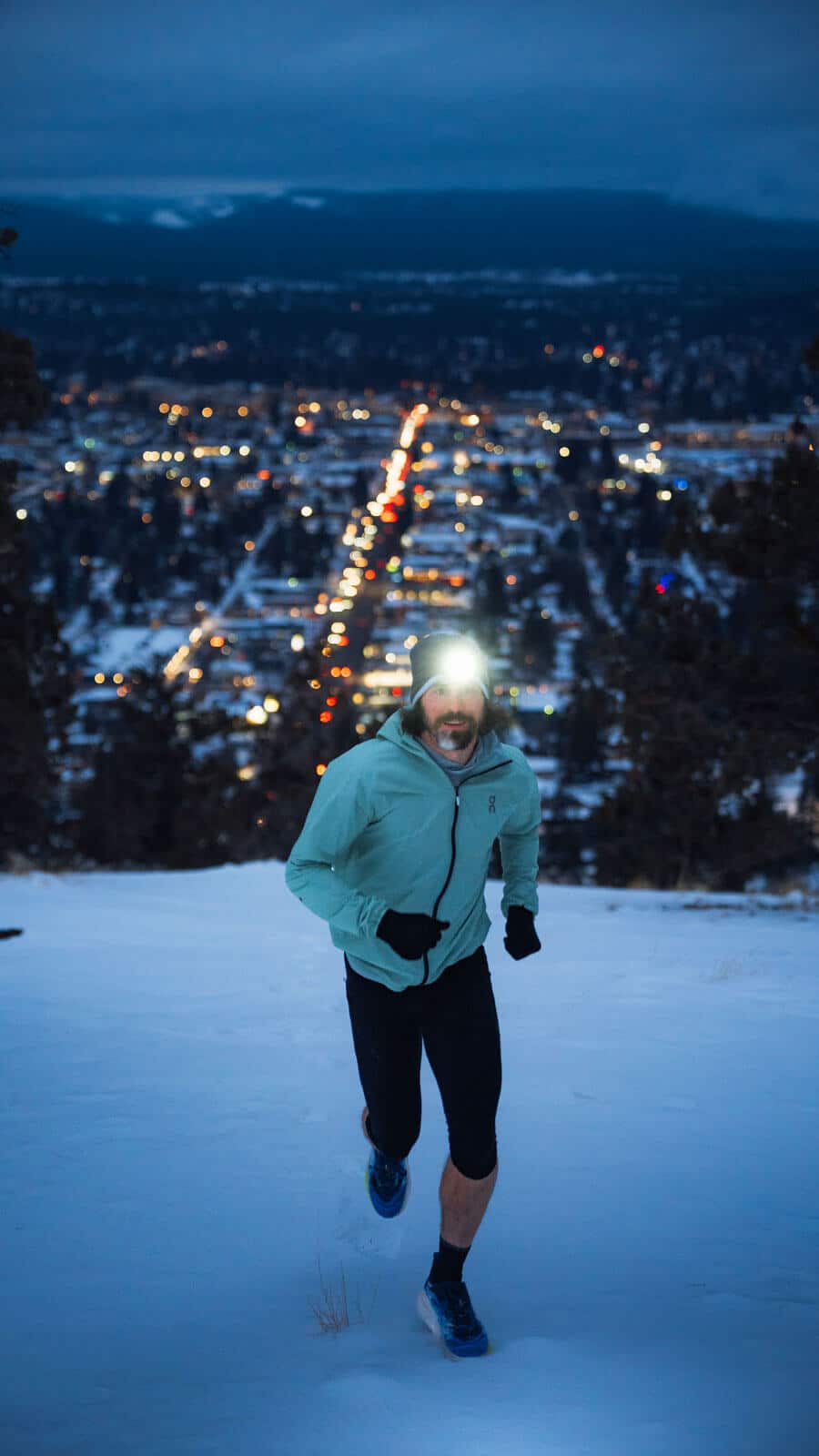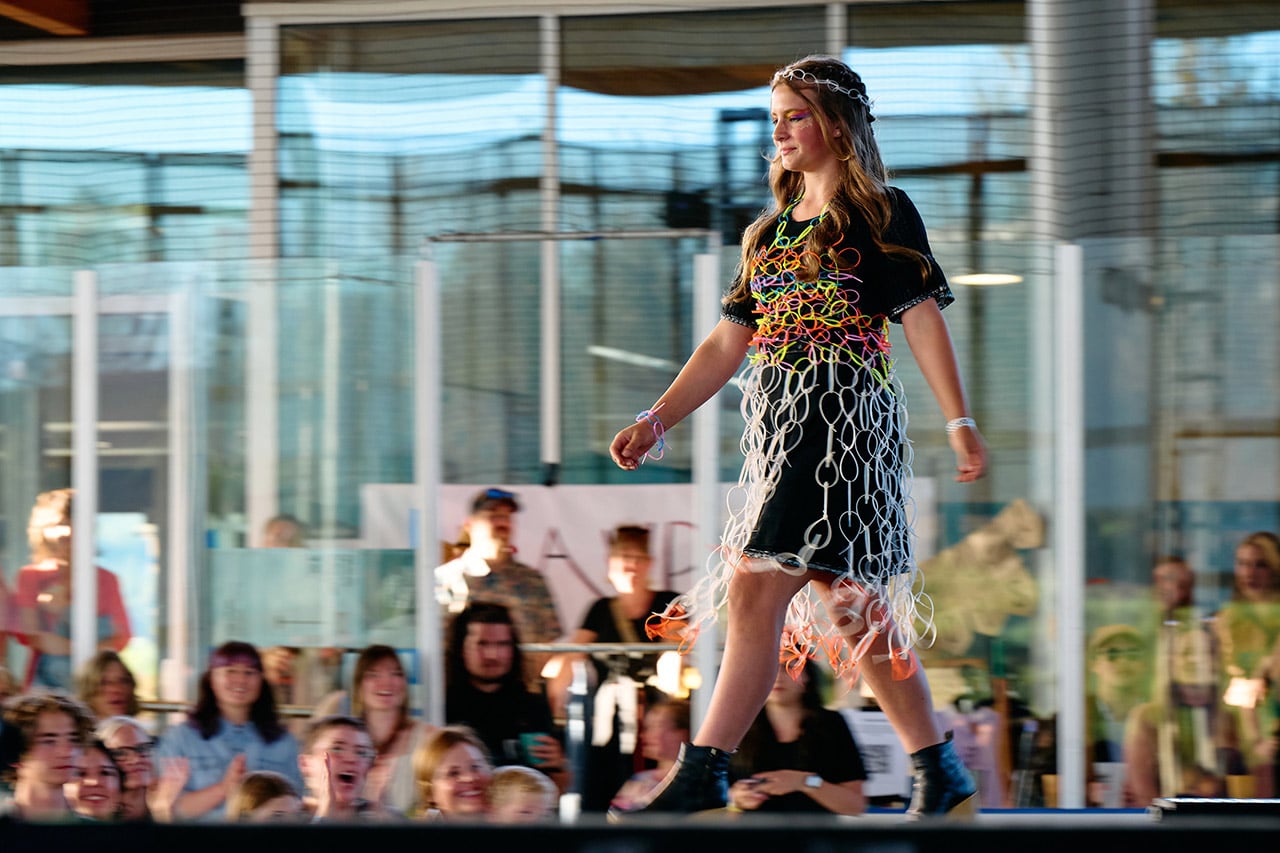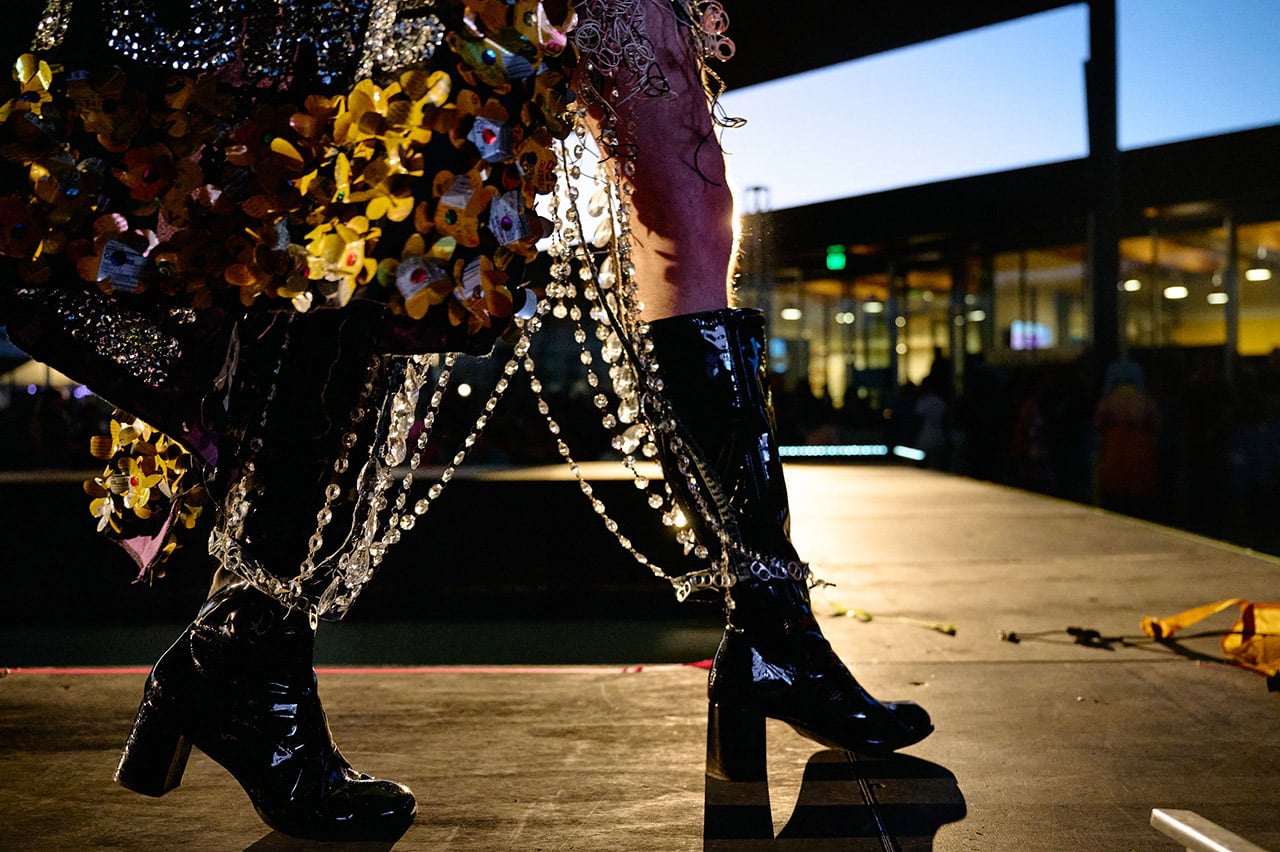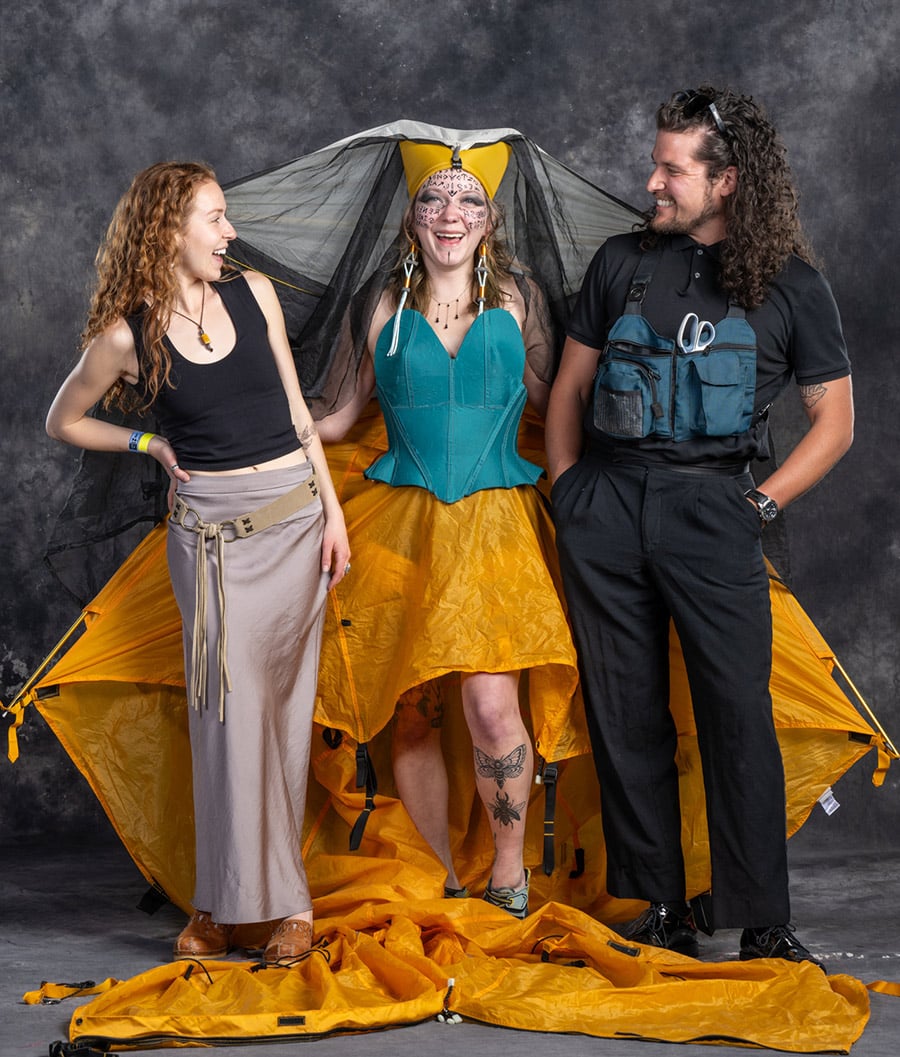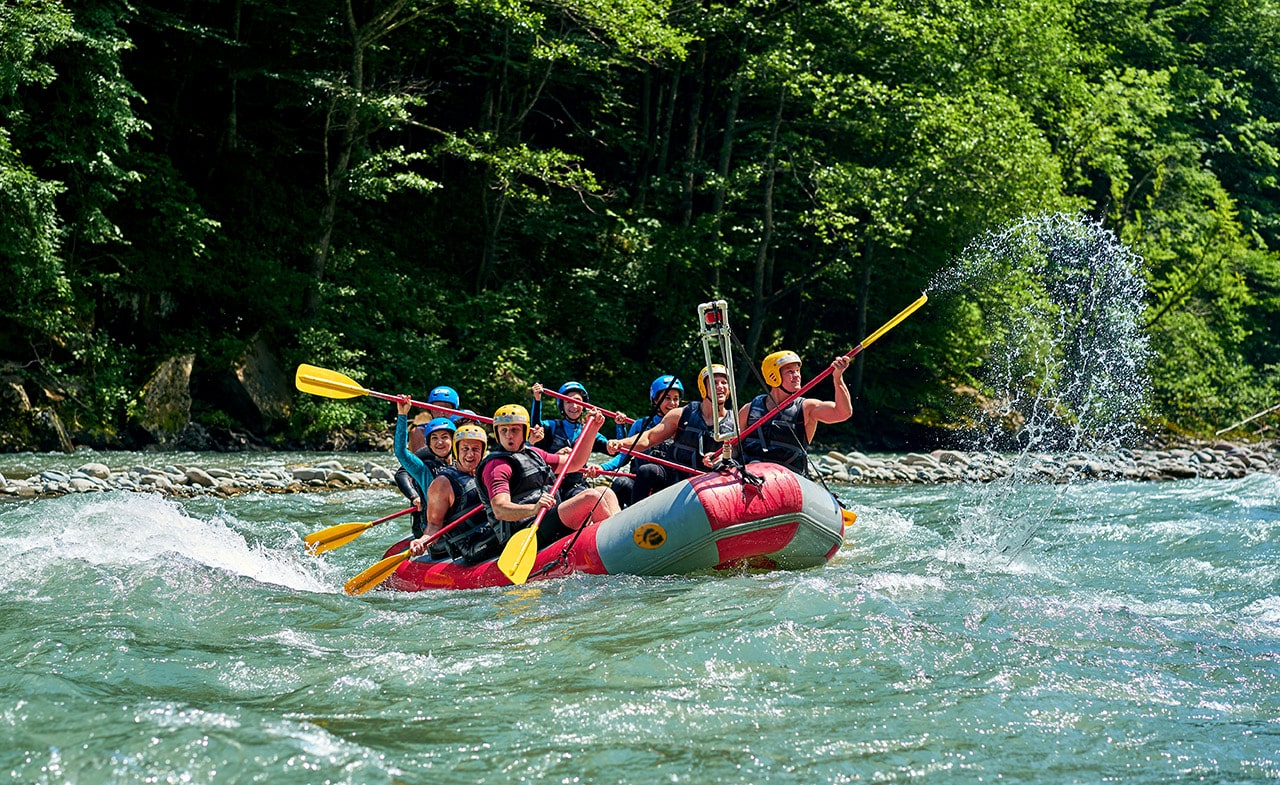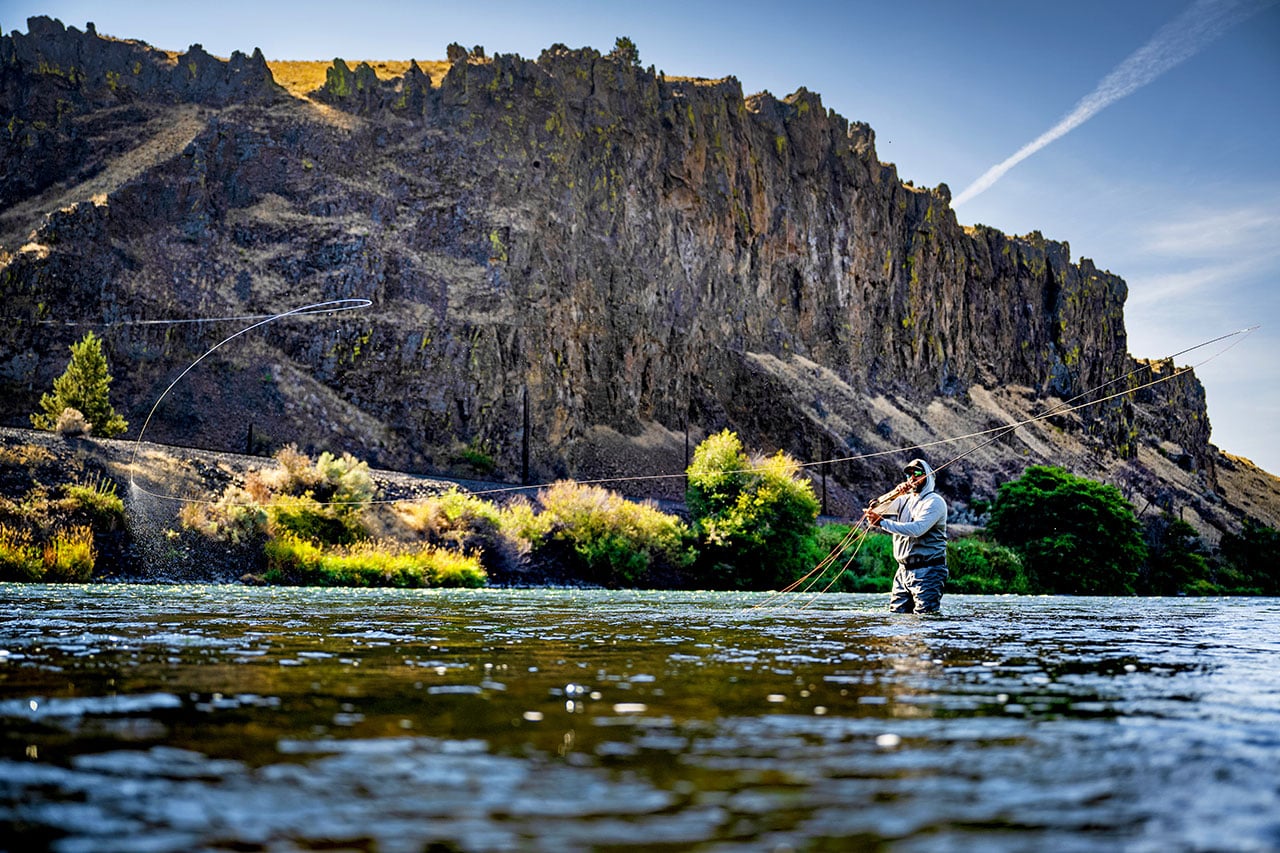Wildlife and Wildflowers
As summer approaches, the wilderness around Bend is brimming with hikers eager to summit buttes and mountain peaks clear of winter snow. But why not take a road trip to explore an equally spectacular landscape with lesser-traversed paths and leave some of the crowds behind? Nestled in the Malheur National Forest of Eastern Oregon is one such place—a glacier-carved valley seeming to rise out of nowhere from the surrounding sage brush hills. This postcard-perfect alpine region is known as the Strawberry Mountain Wilderness, named by homesteader Nathan Willis Fisk—one of Oregon’s earliest pioneers—from his simple observation of an abundance of wild strawberries found there.” [Photo by Garrett & Nina, Oregonisforadventure.com]
To access the Strawberry Mountain Wilderness, hikers starting from Bend drive roughly three-and-a-half hours to the parking area at Strawberry Campground. The sojourner is welcomed with stunning views and more than 100 miles of trails showcasing waterfalls, craggy peaks, spring-fed meadows and seven alpine lakes. The appeal of the Strawberry Mountains is perhaps their ability to simultaneously humble and awe visitors with both a grandeur and quiet nature. The landscape here seems more akin to the Canadian Rockies than the Cascade’s high desert peaks—an unexpected delight in what feels like Oregon’s forgotten backcountry.

This wilderness is also a haven for wildlife and wildflowers. California bighorn sheep and mountain goats are frequent visitors on the andesite cliff outcroppings. In early summer, the mountain basins bloom with colorful explosions of a variety of wildflower species. Throughout the hillside meadows, paintbrush, lupine and monkeyflower mingle and dance to create a colorful symphony of bright pinks, deep purples and striking yellows.
Fortunately, Fisk’s namesake observations still hold true as spring-fed meadows feed the fields and ripe huckleberries and strawberries dot the trails in late summer, offering the hiker plenty of sweet trailside treats. The region is also a backpacker’s paradise, offering an ideal setting for a two- or three-day loop to take in one of the few less-touched areas of majestic wilderness east of the Cascade Range.
Here are three hikes that feature some of the most scenic portions of the Strawberry Mountains, all starting from Strawberry Campground. Choose a beginner’s loop, or level up to the Summit.
Strawberry Lake Loop
If a shorter hike is at the top of the list, the trek around Strawberry Lake provides a perfect introduction to the splendor of the area. The trail picks up at the Strawberry Basin Trailhead in the campground day-use parking lot. It begins with a gradual ascent through a thick fir forest before opening up to a dramatic view of glistening Strawberry Lake. The 4-mile loop follows the shoreline before connecting back to the trailhead and gives ample shaded inlets to take in the valley’s breeze, cast your line or enjoy a tranquil picnic lunch. At around the 1.5-mile marker, turn right to take the lesser-traveled path and enjoy the stillness of the lake’s western shores on the return.
Distance: 4-mile loop | Difficulty: Easy | Dog and family friendly
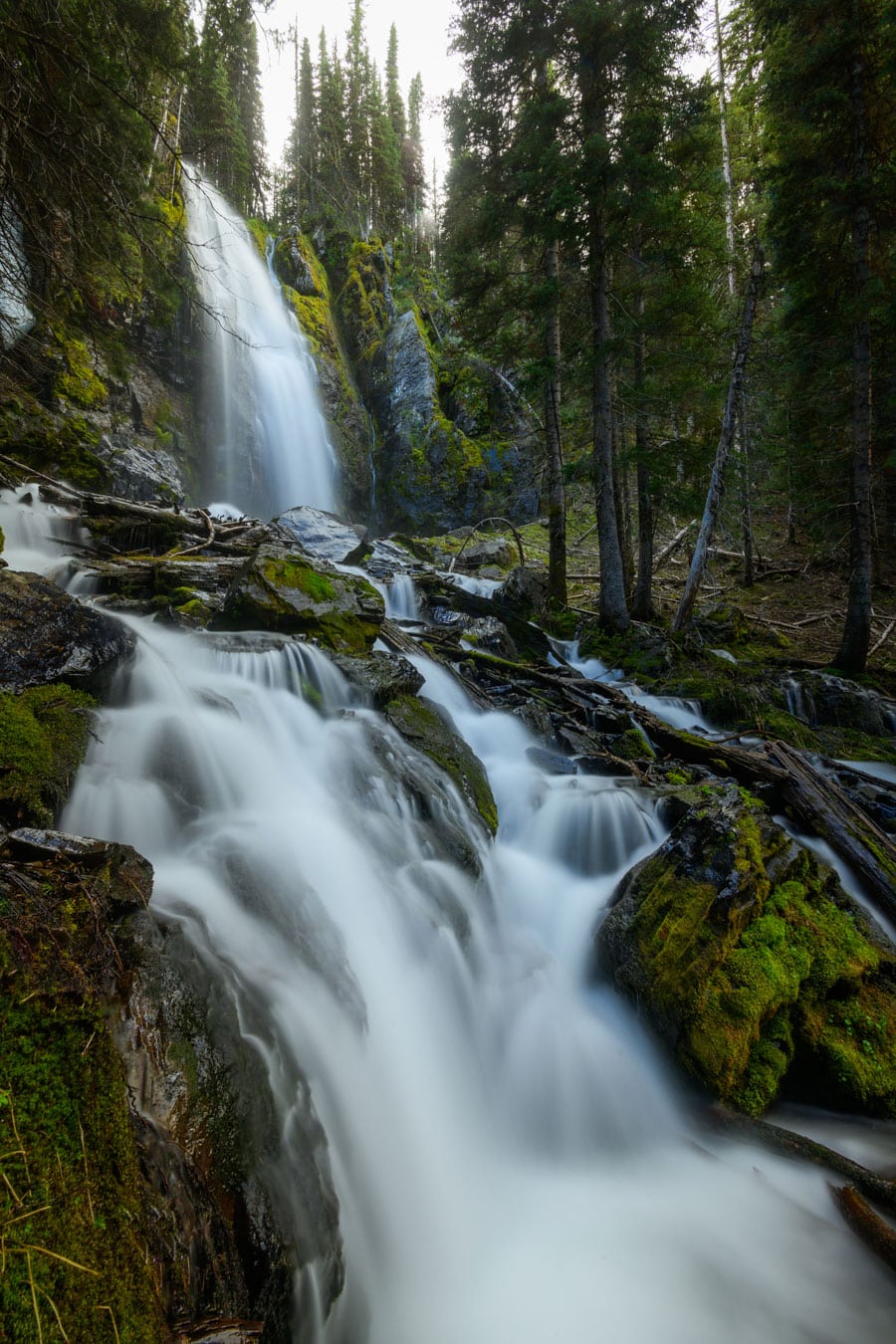
Strawberry Falls and Little Strawberry Lake
At the head of Strawberry Lake is a large grassy meadow and a series of bubbling stream crossings. Look for the sign to the falls branching off to the right and begin the climb. In roughly a mile, feel the mist from 60-foot Strawberry Falls—a welcome treat on a hot summer day. Continue on a long switchback toward the footbridge that traverses the top of the falls. The next fork heads uphill toward the Little Strawberry Lake basin. The babbling Strawberry Creek will follow the trail through the next half-mile section of ponderosa pine forest as glistening Little Strawberry Lake comes into view. Keep watch for mountain goats on the towering cliffs here. There are several secluded sites in which to pitch a tent for overnighting, or head back the same way you came, turning right to explore the other side of the shoreline back toward the falls.
Distance: 6.5 miles out and back | Difficulty: Moderate, but with some challenging sections | Dog and older kid-friendly
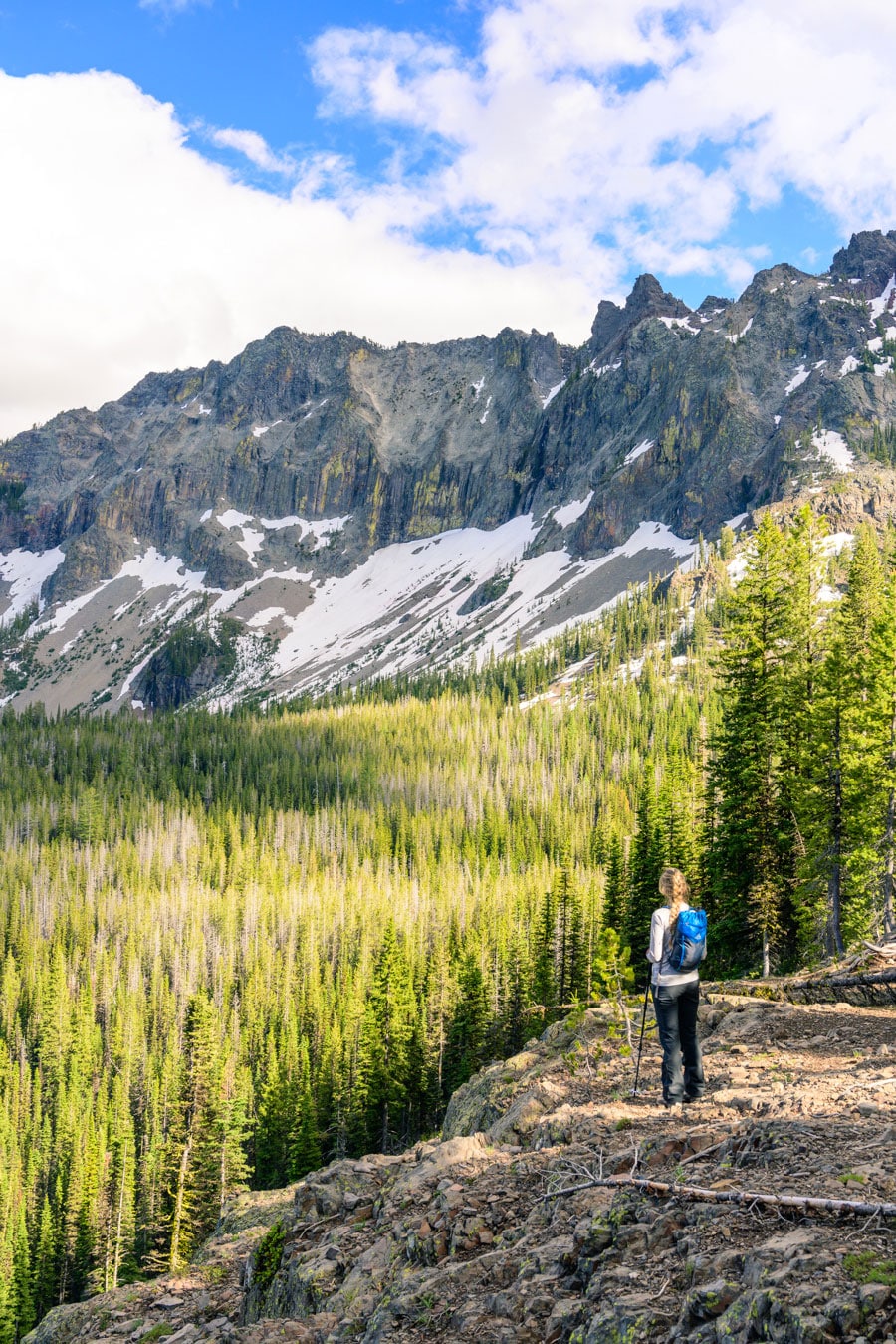
Strawberry Mountain Summit
This trail gains more than 3,000 feet of elevation, so prepare accordingly. At the Strawberry Basin/Little Strawberry Lake Trail Junction is the optional (but recommended) side trip to Little Strawberry Lake, which adds about a mile. From here, the Strawberry Basin trail continues and offers a bird’s-eye view of Strawberry Lake as a kaleidoscope of wildflower meadows come to life. Keep an eye out for the remains of an old cabin, and across the valley to the east, catch a glimpse of Rabbit Ears, a rock formation jutting out of the rocks on the ridgeline. The trail eventually opens up to a drier, more rugged and exposed landscape. Keep right and expect some scree field scrambling here, reminiscent of South Sister’s summit trail (the “one step forward, two steps back” kind). The last 300 feet of the ascent is a series of switchbacks toward the summit’s reward: arguably the best panoramic views of the John Day River valley, the Blue Mountains and the vast Strawberry Mountain Wilderness below. Return the same way for the most scenic descent.
Distance: 13 miles (with optional side trip to Little Strawberry Lake) | Difficulty: Hard | Not recommended for dogs or kids due to narrow trails and drop-offs
Helpful Hiking Tips:
- There are small, nonreservable campsites—one at the base of the trailhead, another farther down the road at Slide Creek—to overnight and begin at early light.
- Pack a fishing pole. The lakes in the area are stocked with brook and rainbow trout.
- A Northwest Forest Pass or interagency pass, such as America the Beautiful, is needed to park at any of the trailheads.
- Mosquito spray is highly recommended if exploring in the early summer months.




